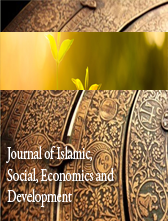SATISFYING E-LEARNING USERS IN MALAYSIA’S GOVERNMENT LINKED COMPANIES: A PRELIMINARY CONCEPT
Abstract
E-learning plays a vital role in the learning and development of executives within Government Linked Companies (GLCs) in Malaysia. The change of its ecosystem, course dimension, trainee dimension and organization dimension affect e-learning effectiveness. Most GLCs in Malaysia adopt e-learning as part of their employees' development process. While factors are abundant on how to make e-learning effective, it is thus, becoming a growing concern and a need to broaden the field of understanding how e-learning can become effective with the moderating and mediating effect of e-leadership and user satisfaction, respectively. Based on the literature reviewed, this research helps identify the underlying causes, limited ecosystem, effectiveness, and need for e-learning implementation into business processes by factoring in the effects of e-leadership and user satisfaction. The findings assist the stakeholders within GLCs to look into those dimensions and the moderator and mediator effect of eleadership and user satisfaction in increasing e-learning effectiveness within the organizations. Based on the preliminary study, it is recommended that provisions be made for a more enhanced e-learning ecosystem and GLCs need to leverage the effect of e-leadership and user satisfaction to increase e-learning effectiveness. Future research may be undertaken to examine more dimensions included within the e-learning ecosystem. This conceptual study's ideas and thoughts are relied on current research on GLCs, focusing on Malaysia.













